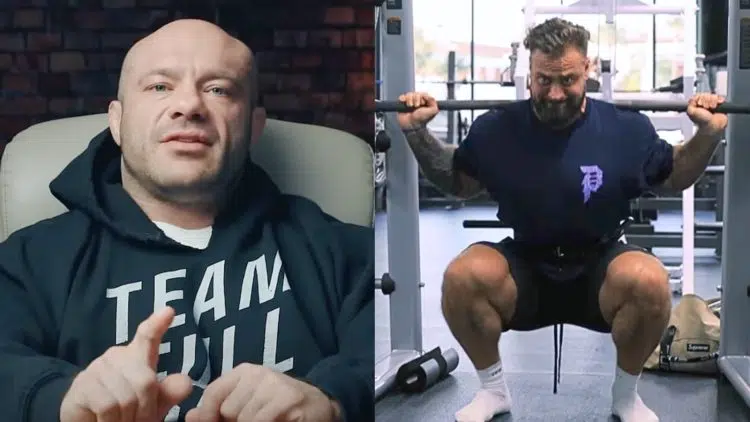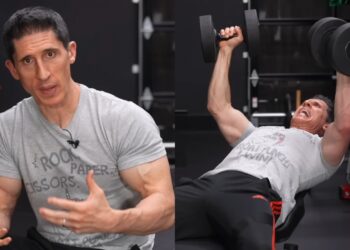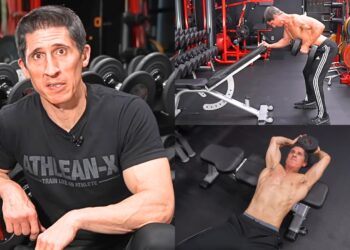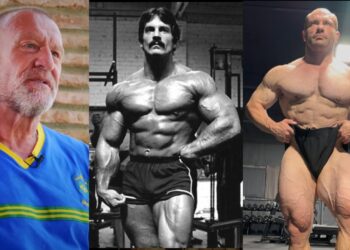Exercise scientist Dr. Mike Israetel is using his expertise in fitness to offer up some highly useful tips for sculpting the lower body. In his latest endeavor shared on August 15, 2024, Dr. Israetel broke down how to squat for effective quad gains, revealing lifting queues for the popular movement.
Dr. Israetel is a leading voice in exercise, having earned his PhD in Sport Physiology from East Tennessee State University. But academia is only half his story, as Israetel built a massive following online courtesy of his thriving YouTube channel Renaissance Periodization, which boasts more than 2.31 million subscribers.
In addition, he’s a physiologist, a Brazilian jiu-jitsu practitioner, and has tested the waters in bodybuilding as an amateur. From analyzing scientific studies to building muscle with exercise inside the gym, his knowledge of body mechanics and movement makes his content highly valuable for anyone on a mission to level up their fitness.
We all know about how effective squats can be for lower body development but due to the stability challenges and difficulty of the exercise, some of us lack the proper form to optimize gains. This is where Dr. Israetel comes in. He recently broke down a list of lifting queues you can use to perfect your form while squatting.
“For every given set of these squats, your quads are going to get substantially noticeably more fucked up, pumped, sore, tired, you name it, than they would for the other kinds of squats. That’s what makes these squats optimized for muscle growth and if you do them, it’s going to make you a hero that the world sings about,” shares Dr. Israetel.
“Or worse case you have bigger quads, which is almost the same thing if you think about it,” says Israetel. “Today’s video is about how to squat for muscle growth.”
Get Fitter, FasterLevel Up Your Fitness: Join our 💪 strong community in Fitness Volt Newsletter. Get daily inspiration, expert-backed workouts, nutrition tips, the latest in strength sports, and the support you need to reach your goals. Subscribe for free!
Exercise Scientist Shares How to Squat With Lifting Queues
Find an itemized list of actions to keep in mind while squatting below:
Dr. Israetel’s Quick Checklist of Squat Lifting Queues
- Chest up, shoulders back
- Heels on ground, just inside to just outside of shoulder width
- Toes out for comfort (more out than you think)
- Knees out for comfort
- Hips back as knees bend
- Breath in before descent, brace, but with chest and ribs UP
- Knees as far over toes as possible, hips DOWN after first push back
- Slow, controlled descent (2s minimum, as many as 5s ok)
- Take min-breaths on descent if needed so you don’t gas out
- Stay as upright as you can at the bottom
- Pop back up quick, but not with max force
- Breathe out at least once at the top, reengage
During the movement, Dr. Israetel advised lifters to keep the chest up with the shoulders back. Heels should be in contact with the ground at around shoulder-width apart. Toe positioning is also important; he says to keep them pointed outward for comfort.
“Number one, we have a checklist of things we pretty much want to do all the time, which means as soon as the bar hits your back, you lock it out, you set up, all the way till that last rep, you want all these things to be true at all times.”
“You want your chest up, shoulders back. You want your heels on the ground, and just around shoulder-width, sometimes just inside, some at shoulder-width, some just outside. Very very wide or very very narrow squats are not as conducive to muscle growth. You want your toes to be pointed out for comfort usually in line with your knees,” he shared.
His checklist is a guiding tool, but underlines that you should ‘find what works best for you’ when squatting for quad gains.
“What I don’t want you to do is arbitrarily put your toes really far out then it feels weird or really far forward and then it feels weird. Find what works best for you,” adds Israetel. “Knees should be coming out for comfort.”
Next, Israetel discussed how much knee bend is necessary as well as why it’s important to breathe in before the descent.
“Toes out for comfort, knees out for comfort and every rep is going to have that as an ingredient. Point number two, as you bend your knees you want to push your hips back. If you just bend your knees, you’re going to end up on your toes and that’s bad news. So, hips back a little bit as you bend your knees.”
“Before you start the descent, as you break, you want to breathe in and brace but with your chest and ribs up now down.”
Lastly, as you travel downwards, the hips should be tilted back with the knees traveling as far forward as possible.
“As you travel downwards, remember you’re going to tilt your hips back, and then you’re going to start the downward descent. As your hips travel down, so long as your heels are still on the ground producing force, you want your knees to travel as far forward as possible.”
Muscle-building expert and four-time Mr. Olympia Jay Cutler has also offered fans insight on how to squat more effectively. In particular, he provided queues and tips for perfecting the back squat.
“I am the king of squats, and by the way I did squat 700 at 19. But, for the back squat okay, the most important, I like to keep the bar a little lower on the neck, so not too high on the neck, sitting in the middle of the back, and ideally remember when you squat you want to keep your head up or facing forward.”
I, for one, struggle with depth and range of motion while squatting, which makes Dr. Israetel’s advice all the more valuable. With his detail-packed checklist, we can all take a lesson or two for the sake of extra quad gains.









